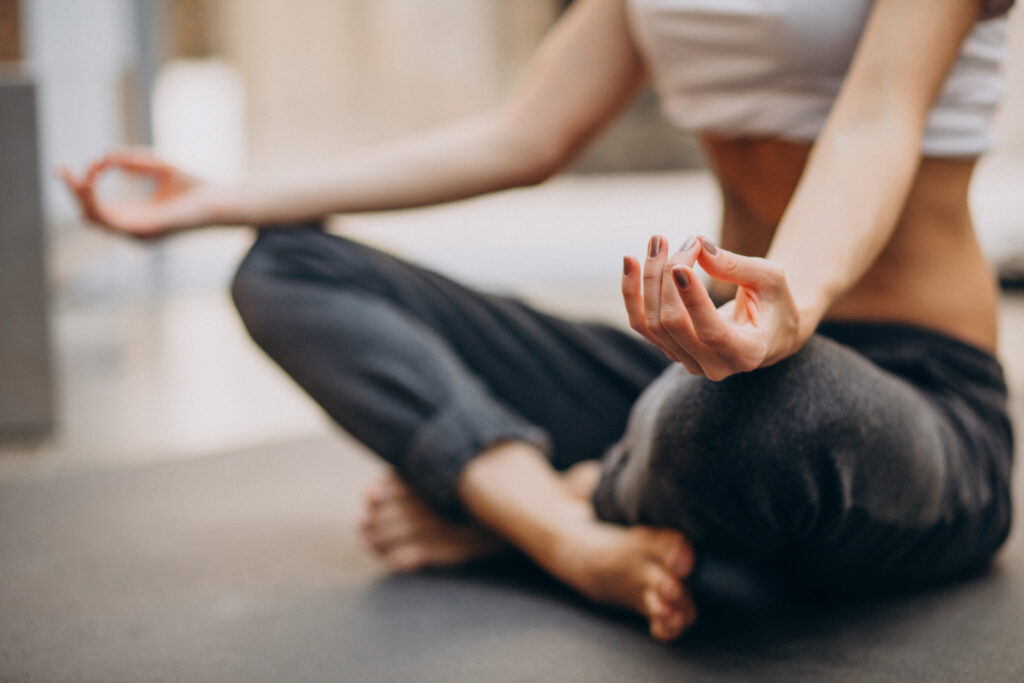Why is Yoga so important?

We all encounter yoga practices in different shapes and forms. Some of us look into yoga to get in better shape, while others incorporate it into their spiritual practices through yoga asanas. For me, yoga became a way to breathe better and relax my mind. A relaxed mind leads to a relaxed body! Or, as my guru would say: “Flexible body, flexible mind.” How true it is! When we move our physical body, our nervous system flows along with the rhythm, creating harmony. Our bodies are constantly changing, either growing or decaying every minute of the day. If we don’t move our bodies, they begin to show signs of inflexibility, stiffness, and calcifications. An active body circulates oxygen more effectively in all areas, reducing premature aging. When we take a yoga class, we not only calm the body by focusing on our breath, but each movement builds strength in specific areas. Some of the preventive benefits of yoga include strengthening the body, preventing injuries, healing naturally, stabilizing our mood, overcoming illnesses, and enhancing overall health. The word “yoga” itself means union. This union represents the wholeness we feel with our physical body and mind, brought together through our breath. This harmonious union provides essential healing that everyone needs. Whether we practice yoga daily or twice a week, we give ourselves a chance to address physical and emotional challenges that may not be immediately visible. Often, issues are resolved before they escalate. Finding the right type of yoga class for your body and age can be a tricky task. Depending on your body’s limitations, if any, you should include movements that involve stretching, lengthening, contracting, and expanding your muscles and bones. Twisting your body helps with detoxification and massages internal organs, while faster-paced movements increase your heart rate and improve circulation. Yoga asanas typically include all these movements in one session. The pace at which you move your body is entirely up to you. As my teacher used to say: “You are creating your class; I am just guiding you.” This means that when we attend a class, we can decide how hard we want to work that day. No one should push us to do more than our bodies are ready for. Some medical benefits of yoga asanas include better lymphatic drainage, stronger bones, enhanced bodily functions, and improved blood and lymph flow. These benefits contribute to a stronger immune system. By controlling our breath, we gain control over our minds, which in turn influences how we think. Positive thoughts lead to a happier body, and a happier body keeps its cells content, preventing them from overmultiplying and causing illnesses. Our bodies mirror our lifestyle choices. Why not guide them the right way by adding a wholesome practice like yoga to keep us healthier? Yoga is accessible to everyone, even those with physical limitations. True yoga practice is about smooth breathing and learning to calm the mind so the body can move fluidly. The next time fear or hesitation stops you from attending a yoga class, remember that the same mind will change once you start this ancient practice. Yoga has taught me to stay still, breathe calmly, and pay attention to my body as I guide it through the asanas. I’ve learned to notice both the comfort and discomfort in my body, make mental notes, and focus on unblocking the discomfort in specific areas. I often feel a bit tired after each class, but the peacefulness that lingers for hours, sometimes days, outweighs the effort it takes to complete a session successfully. Namaste, Shab
Comfort Measures – Techniques and Tools to Enhance Your Comfort During Sessions

Building on last week’s discussion of how your health and tumor characteristics influence your personalized treatment plan, it’s equally important to focus on your comfort during radiation therapy. Comfort plays a significant role in ensuring that your treatment is not only effective but also as stress-free as possible. This week, we’ll explore several techniques and tools that can help enhance your comfort during radiation therapy sessions. Undergoing radiation therapy can be physically and emotionally challenging, but there are numerous strategies available to enhance your comfort during treatment sessions. Leading cancer treatment centers like the Mayo Clinic place a strong emphasis on creating a soothing environment for patients. From the moment you enter the treatment room, every effort is made to help you feel relaxed and at ease. Some facilities offer calming music, soft lighting, or even the option to bring a comforting item from home, like a favorite blanket or pillow, to help you feel more comfortable during your sessions. Proper positioning during radiation therapy is crucial not only for the effectiveness of the treatment but also for your comfort. During your initial planning session, known as simulation, your medical team will work to ensure that you are positioned in a way that allows the radiation to be delivered precisely to the tumor while minimizing discomfort. This might involve the use of custom molds, cushions, or other devices to help you stay in a stable and comfortable position throughout each session. In addition to physical comfort, managing anxiety is an important aspect of your overall well-being during treatment. Techniques such as deep breathing, mindfulness, or guided imagery can be very effective in helping you stay calm and focused. Some patients find it helpful to practice these techniques before their sessions to reduce stress and anxiety. Many treatment centers also offer access to support services, such as counseling or relaxation therapy, to help you manage the emotional aspects of your treatment. For patients undergoing radiation therapy to the chest area, breathing techniques like deep inspiration breath hold (DIBH) can be particularly beneficial. This technique involves taking a deep breath and holding it during the radiation delivery, which can help move the heart out of the radiation field, reducing the risk of heart damage. It’s a simple yet effective way to enhance both safety and comfort during treatment. Finally, it’s important to communicate openly with your radiation therapist about any discomfort or concerns you may have during your sessions. Whether it’s adjusting the temperature in the room, changing your position slightly, or taking a short break, your therapist is there to help make your experience as comfortable as possible. Remember, your comfort is a priority, and there are many ways to ensure that your treatment is as smooth and stress-free as possible. Next week, we’ll shift our focus to navigating the healthcare system, exploring practical tips on how to communicate effectively with your healthcare team to ensure you get the most out of your treatment.
